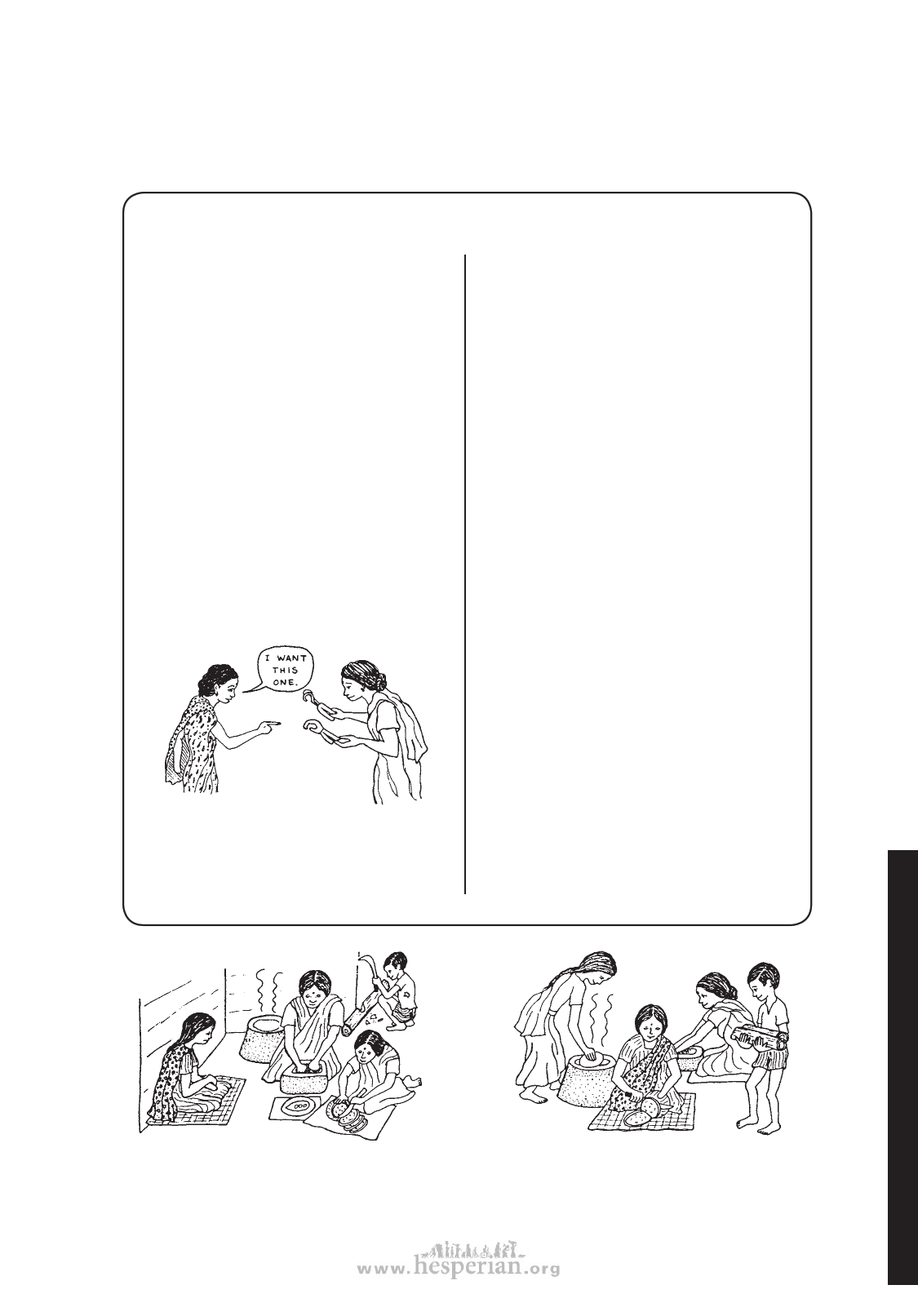
INTRODUCTION TO PART 3
WHAT IS MORE IMPORTANT—APPEARANCE OR FUNCTION?
When a choice needs to be made between an aid that is more useful and one that is
more attractive (or perhaps no aid at all), it is important to consider the cultural factors
and to respect the wishes of the child and her parents. Here is another story.
531
A HELPING HAND FOR SRI
When Sri was 13 years old, one day she
was helping her father at a small sugar-cane
mill that was pulled round and round by a mule.
Her hand got caught in the gears of the mill and
was crushed. It had to be cut off at the wrist.
The stump healed quickly, but Sri’s spirit
did not. It seemed as though it, too, had been
crushed. She had been a happy girl. Now
she just sat around. She did not help with
housework, and refused to go outside. She kept
her stump hidden in her clothing or behind her
back.
Sri’s family worried about her. They took
her to a specialist in the city who examined
her and suggested an artificial limb. She gave
Sri the choice between hooks, which would
be useful, and an artificial hand, which looked
more natural but would be less useful. The
specialist encouraged her to choose the
hooks, and explained how well she could learn
to use them. But Sri picked the hand.
The hand was very expensive, but it looked
almost real, and the family agreed. Her father
had to sell his mule to pay for it, and was in
debt for more than a year.
As time went by, however, Sri never really
used her new hand. She tried it on a few
times, but it seemed cold and dead. One
day when her mother took her to the market
wearing the hand, Sri thought everyone was
looking at her. Two little boys, who had been
her friends, pointed at the hand and laughed.
She never wore it again.
One day a village health worker visited
Sri’s home. She saw that everyone was busy
working and doing things except Sri, who sat
quietly in the corner.
After talking with her family, the health
worker suggested that they make an effort to
treat Sri just like the other children. “Encourage
her to help with work, and to take part in all
your activities,” she said. “Don’t pretend that
Sri’s hand isn’t missing. Just accept her as she
is. Let her know that you love her and need her
help as much as before.”
So instead of feeling sorry for Sri, or letting
her just sit and feel sorry for herself, her
family began to treat her as they had before
the accident. They asked her to help with the
housework, prepare the meals, and care for
the baby. At first Sri was unwilling and found
everything difficult. But soon she learned how
to do many things by using her good hand and
her stump. She began to gain new confidence
in herself, and in time started going to the
market alone. At first, people took notice of
her missing hand, or whispered. “Oh, poor
thing!” But when they saw how well she did
things they soon stopped feeling sorry for her
and began to treat her like any other person.
NO YES
It is important that the family not let the
disabled person be separated from daily
work and activities.
Instead, look for ways to let the disabled
person help as best she can.
disabled village children